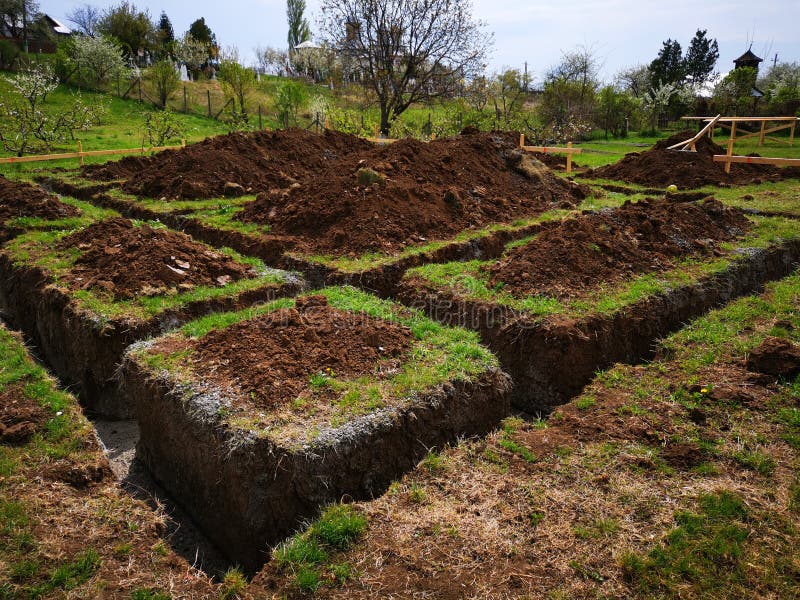Dig A Foundation
If you're planning on building a new home or structure, one of the most important steps is digging a proper foundation. Without a solid foundation, your entire building could be at risk for structural damage or even collapse. The process of digging a foundation may seem daunting, but it's an essential step for a safe and sturdy structure.
Pain Points Related to Digging a Foundation
One of the biggest pain points with digging a foundation is the potential for unexpected obstacles in the soil, such as rocks or tree roots. These obstructions can slow down the digging process and increase the cost of the project. Additionally, the amount of digging required for a foundation can be physically demanding and time-consuming, which can be a challenge for individuals without experience or proper equipment.
The Target of Digging a Foundation
The purpose of digging a foundation is to create a stable base for your building to rest on. This involves removing soil and creating a level surface where your structure can be built upon. Digging a foundation also involves creating a sturdy retaining wall to prevent soil from collapsing into the foundation and causing damage.
Summary of Main Points
In summary, digging a foundation is a crucial step in building a safe and sturdy structure. It can be a physically challenging and time-consuming process, with potential obstacles in the soil that can increase costs. However, with the right equipment and experience, digging a foundation can be done efficiently and effectively to ensure a stable base for any building.
The Importance of Proper Planning in Digging a Foundation
Digging a foundation requires careful planning and preparation to ensure success. Personal experience has shown that it's important to consider any potential obstacles in the soil beforehand and have a plan in place for how to deal with them. It's also important to properly mark the layout of the foundation and have the necessary tools and equipment to do the job properly.
One key factor to consider is the depth of the foundation. The depth can vary depending on soil conditions, climate, and other factors. It's important to consult with professionals who can provide guidance on the appropriate depth for your building's foundation.
The Role of Excavation Contractors in Digging a Foundation
Excavation contractors play a crucial role in digging a foundation. As experienced professionals, they have the necessary equipment and skills to complete the job safely and effectively. They can also help identify potential obstacles in the soil and provide solutions for how to handle them.

Types of Foundations
There are several types of foundations to consider when digging a foundation. The most common include a slab-on-grade foundation, a basement foundation, and a crawlspace foundation. Each type has its own advantages and disadvantages depending on your specific needs and building plans.

The Importance of Proper Drainage for a Foundation
In addition to proper excavation and construction of the foundation, it's important to consider drainage around the foundation. Poor drainage can lead to water damage, soil erosion, and other issues that can compromise the stability of the structure. Proper grading, installing gutters, and ensuring adequate drainage systems can help protect your foundation from damage.
Question and Answer Section
Q: How deep should a foundation be dug?
A: The depth of a foundation can vary depending on soil conditions, climate, and other factors. It's important to consult with professionals who can provide guidance on the appropriate depth for your building's foundation.
Q: What type of equipment is needed for digging a foundation?
A: Excavators, backhoes, and bulldozers are common types of equipment used for digging a foundation. The specific equipment needed can vary depending on the size and scope of the project.
Q: What are some common obstacles encountered when digging a foundation?
A: Rocks, tree roots, and underground utilities are common obstacles encountered when digging a foundation. These obstacles can add time and cost to the project, and may require specialized equipment or expertise to address.
Q: How long does it typically take to dig a foundation?
A: The timeline for digging a foundation can vary depending on a number of factors, including the size and depth of the foundation, soil conditions, and the equipment being used. On average, digging a foundation can take anywhere from one week to several months.
Conclusion
Digging a foundation is a crucial step in building a safe and sturdy structure. It requires careful planning and preparation, and often involves the help of experienced professionals. By considering factors such as soil conditions, drainage, and equipment needs, you can ensure a successful foundation digging process that will provide a solid base for your building for years to come.
Gallery
How To Dig A Foundation | HowToSpecialist - How To Build, Step By Step
Photo Credit by: bing.com / foundation dig digging howtospecialist
Kerala House Construction Tips: 2015

Photo Credit by: bing.com / construction house digging foundation tips kerala pit
Foundation Digging | Foundation Giude | How And Why To Dig Foundation

Photo Credit by: bing.com / foundation digging dig march
Man Digging Ground Stock Image. Image Of People, Hair - 4832065

Photo Credit by: bing.com / digging
Digging A Footing For A Foundation | MyCoffeepot.Org
Photo Credit by: bing.com / digging foundation footing foundations house soil construction why site raised work testing income basic should does well trenches tomtarrant